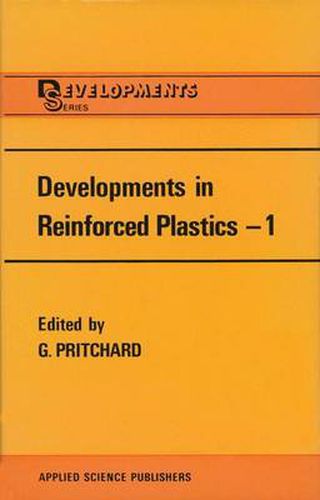Readings Newsletter
Become a Readings Member to make your shopping experience even easier.
Sign in or sign up for free!
You’re not far away from qualifying for FREE standard shipping within Australia
You’ve qualified for FREE standard shipping within Australia
The cart is loading…






One of the most interesting developments in composite materials technology during the past decade has been the attempt to displace thermosetting resins from their position as the natural matrix in ‘advanced’ composites for sUl;h fields as aerospace. Dr McMahon gives some indication of the nature of this challenge in his chapter on fibre-reinforced thermoplastics. He acknowledges the problem of their low fibre contents, with the associated possibility of inadequate mechanical properties, especially in compression; and draws attention to the way in which the lack of suitable teSI methods for composites in compression has caused difficulties in assessing the latest thermoplastics composites in this respect. It is therefore of special interest that Professor Piggott deals with the whole question of compression tesllflg of composites in Chapter 4. On the positive side, reinforced thermoplastics seem to be much more damage-tolerant than thermosets. This is clearly an advantage that will not be lost on the aircraft industry. The subject of damage repair to FRP is one of substantial concern; the wider question of defect detection and assessment is discussed authoritatively by Reifsnider and Henneke in Chapter 3, which focuses on the technique of thermography.
$9.00 standard shipping within Australia
FREE standard shipping within Australia for orders over $100.00
Express & International shipping calculated at checkout
One of the most interesting developments in composite materials technology during the past decade has been the attempt to displace thermosetting resins from their position as the natural matrix in ‘advanced’ composites for sUl;h fields as aerospace. Dr McMahon gives some indication of the nature of this challenge in his chapter on fibre-reinforced thermoplastics. He acknowledges the problem of their low fibre contents, with the associated possibility of inadequate mechanical properties, especially in compression; and draws attention to the way in which the lack of suitable teSI methods for composites in compression has caused difficulties in assessing the latest thermoplastics composites in this respect. It is therefore of special interest that Professor Piggott deals with the whole question of compression tesllflg of composites in Chapter 4. On the positive side, reinforced thermoplastics seem to be much more damage-tolerant than thermosets. This is clearly an advantage that will not be lost on the aircraft industry. The subject of damage repair to FRP is one of substantial concern; the wider question of defect detection and assessment is discussed authoritatively by Reifsnider and Henneke in Chapter 3, which focuses on the technique of thermography.